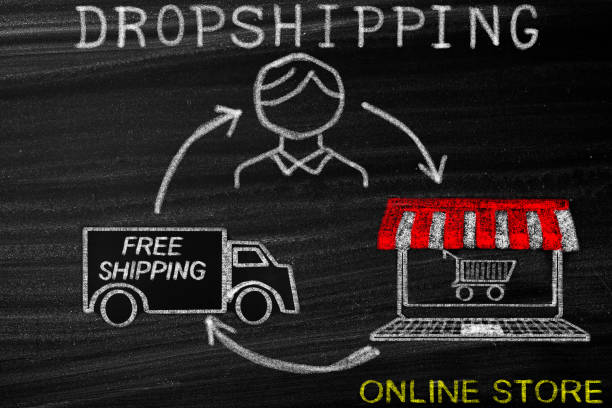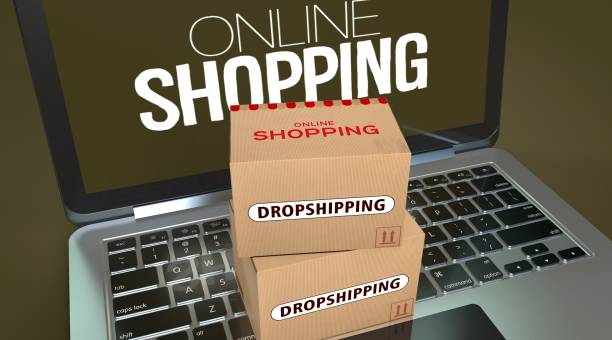Droppshipping has gained immense popularity as a business model that allows entrepreneurs to sell products online without the need to hold inventory. This guide will delve into what dropshipping entails, how to get started with a dropshipping business, and strategies to make it profitable.
Understanding Dropshipping
Dropshipping is a retail fulfillment method where a store doesn’t keep the products it sells in stock. Instead, when a store sells a product, it purchases the item from a third-party supplier (usually a wholesaler or manufacturer) and has it shipped directly to the customer. In essence, the seller acts as a middleman, earning a profit on the price difference between the supplier’s wholesale price and the retail price charged to the customer.
How Dropshipping Works
- Choose a Niche and Products: The first step in starting a dropshipping business is to select a niche market and the products you want to sell. This involves researching market trends, identifying products with high demand, and ensuring there’s enough profit margin to sustain your business.
- Find Reliable Suppliers: Once you’ve chosen your niche and products, the next crucial step is to find reputable suppliers who offer dropshipping services. These suppliers will fulfill orders on your behalf, ship products directly to your customers, and handle inventory management.
- Set Up an Online Store: After securing suppliers, you need to set up an ecommerce store where customers can browse and purchase your products. Popular ecommerce platforms like Shopify, WooCommerce (for WordPress users), and BigCommerce offer user-friendly interfaces and tools to create a professional online store.

- Market Your Products: With your store set up, the next challenge is driving traffic to your website and converting visitors into customers. This involves implementing effective marketing strategies such as search engine optimization (SEO), social media marketing, content marketing, email marketing, and paid advertising.
- Process Orders: When a customer places an order on your website, you forward the order details to your supplier along with the customer’s shipping address. The supplier then packages and ships the product directly to the customer under your business name. Your profit is the difference between the price you charge the customer and the price the supplier charges you.
- Customer Service: Providing excellent customer service is crucial for building trust and ensuring customer satisfaction. This includes promptly responding to inquiries, resolving issues with orders or shipments, and handling returns or refunds efficiently.
Advantages of Dropshipping
- Low Startup Costs: One of the biggest advantages of dropshipping is its low barrier to entry. You don’t need to invest heavily in inventory, warehouse space, or fulfillment infrastructure, making it an accessible option for new entrepreneurs.
- Minimal Risk: Since you don’t purchase inventory upfront, you’re not exposed to the risk of holding unsold products or managing surplus inventory. This allows you to test different products and niches with minimal financial risk.

- Scalability: Dropshipping allows you to scale your business quickly and efficiently. You can expand your product offerings, target new markets, and increase sales volume without the constraints of traditional retail logistics.
- Flexibility: As a dropshipper, you have the flexibility to operate your business from anywhere with an internet connection. This freedom enables you to manage your store remotely and adapt to changing market conditions.
Challenges of Dropshipping
- Lower Profit Margins: While dropshipping offers low startup costs, it also typically yields lower profit margins compared to traditional retail models. This is due to increased competition, price transparency, and the costs associated with outsourcing fulfillment.
- Supplier Dependence: Your business relies heavily on your suppliers’ reliability, product quality, and shipping times. Choosing trustworthy suppliers and maintaining strong relationships is essential for ensuring consistent service and customer satisfaction.
- Customer Service Management: Managing customer expectations and resolving issues related to product quality, shipping delays, or returns can be challenging when you’re not directly handling inventory and fulfillment.
Steps to Start a Dropshipping Business
Step 1: Research and Choose a Profitable Niche
- Market Research: Identify trending products and niches with sufficient demand and growth potential. Use tools like Google Trends, Amazon Best Sellers, and social media platforms to gauge market interest and competition levels.
- Evaluate Profitability: Assess the profit margins of potential products by calculating the difference between the supplier’s wholesale price and the retail price you intend to charge customers. Consider factors like shipping costs, transaction fees, and marketing expenses.

Step 2: Find Reliable Suppliers
- Supplier Selection: Research and vet potential suppliers based on their product catalog, pricing, shipping policies, and reputation. Directories like AliExpress, Oberlo, SaleHoo, and ThomasNet can help you find reputable dropshipping suppliers across various industries.
- Contact Suppliers: Reach out to selected suppliers to inquire about their dropshipping services, terms of partnership, and any requirements for becoming a reseller. Request product samples to assess quality and shipping times firsthand.
Step 3: Set Up Your Ecommerce Store
- Choose an Ecommerce Platform: Select a platform that suits your budget and technical expertise. Shopify is popular for its ease of use and integrated dropshipping apps, while WooCommerce offers flexibility and customization options for WordPress users.
- Design Your Store: Customize your store’s theme, layout, and branding elements to create a cohesive and professional online presence. Optimize product pages with compelling descriptions, high-resolution images, and customer reviews to enhance conversion rates.
- Integrate Payment Gateways: Set up secure payment gateways like PayPal, Stripe, or Square to process online transactions and protect customer financial information. Offer multiple payment options to accommodate diverse customer preferences.
Step 4: Develop a Marketing Strategy
- Build Your Brand: Define your brand identity, voice, and values to differentiate your store from competitors. Create a compelling brand story and visual identity that resonates with your target audience.
- SEO Optimization: Optimize your website for search engines by using relevant keywords, meta tags, and descriptive URLs. Publish high-quality content such as blog posts, product guides, and customer testimonials to attract organic traffic and improve search engine rankings.
- Social Media Marketing: Leverage social media platforms like Facebook, Instagram, Pinterest, and TikTok to promote your products, engage with followers, and drive traffic to your store. Create visually appealing posts, run targeted ad campaigns, and collaborate with influencers to expand your reach.
- Email Marketing: Build an email list of subscribers and customers to nurture relationships, share promotional offers, and encourage repeat purchases. Segment your email campaigns based on customer preferences, purchase history, and engagement levels to deliver personalized content and maximize conversions.
- Paid Advertising: Invest in paid advertising channels like Google Ads, Facebook Ads, and influencer partnerships to reach a broader audience and accelerate store growth. Monitor ad performance metrics such as click-through rates, conversion rates, and return on ad spend (ROAS) to optimize campaign effectiveness and allocate budget strategically.
Step 5: Launch and Manage Operations
- Soft Launch: Conduct a soft launch of your store to test functionality, checkout process, and customer experience. Gather feedback from early customers to identify areas for improvement and refine your store’s operations.
- Order Processing: Manage incoming orders by forwarding customer details and shipping addresses to your suppliers in a timely manner. Communicate shipping updates and tracking information to customers to enhance transparency and build trust.
- Customer Support: Provide responsive and knowledgeable customer support through multiple channels such as email, live chat, and social media. Address inquiries, resolve issues, and handle returns or refunds promptly to ensure positive shopping experiences and foster customer loyalty.
Step 6: Optimize and Scale Your Business
- Performance Monitoring: Track key performance indicators (KPIs) such as website traffic, conversion rates, average order value (AOV), and customer acquisition cost (CAC). Use analytics tools and dashboards provided by your ecommerce platform to gain insights into customer behavior, sales trends, and marketing campaign performance.
- Continuous Improvement: Implement A/B testing, analyze data-driven insights, and iterate on your marketing strategies, product offerings, and website design to optimize performance and enhance user experience. Stay informed about industry trends, consumer preferences, and technological advancements to adapt your business strategy and remain competitive in the ecommerce marketplace.
- Business Expansion: Explore opportunities for diversification by adding new product categories, expanding into new geographical markets, or launching complementary services. Evaluate potential partnerships, collaborations, or joint ventures to leverage synergies and unlock new growth opportunities for your dropshipping business.

Tips for Success in Dropshipping
- Choose Reliable Suppliers: Partner with reputable suppliers who offer quality products, competitive pricing, and reliable shipping services. Establish clear communication channels and expectations to ensure seamless order fulfillment and customer satisfaction.
- Focus on Customer Experience: Prioritize exceptional customer service by addressing inquiries promptly, providing accurate product information, and resolving issues effectively. Build trust and loyalty with your customers to encourage repeat purchases and positive word-of-mouth referrals.
- Optimize Operational Efficiency: Streamline order processing, inventory management, and fulfillment operations to minimize errors and maximize efficiency. Leverage automation tools, software integrations, and logistics solutions to simplify workflows and scale your dropshipping business effectively.
- Stay Compliant: Familiarize yourself with ecommerce regulations, tax requirements, and consumer protection laws applicable to your business operations. Ensure compliance with legal obligations, data privacy policies, and industry standards to protect your business and maintain customer trust.
- Continuous Learning: Stay curious, proactive, and adaptable to evolving market trends, technological advancements, and consumer behaviors. Invest in ongoing education, attend industry conferences, and network with peers to stay informed and inspired in your entrepreneurial journey.
Conclusion
Dropshipping offers a lucrative opportunity for aspiring entrepreneurs to start an ecommerce business with minimal upfront investment and operational complexities. By leveraging the dropshipping model, you can focus on product selection, marketing strategies, and customer acquisition while outsourcing inventory management and order fulfillment to third-party suppliers.
While dropshipping presents various benefits such as low startup costs, scalability, and flexibility, it also requires careful planning, supplier management, and customer relationship building to succeed in a competitive marketplace. Follow the steps outlined in this guide, adapt them to your unique business goals, and continuously optimize your strategies to achieve sustainable growth and profitability in your dropshipping venture.
This comprehensive guide provides aspiring entrepreneurs with valuable insights into the dropshipping business model, including its definition, steps to get started, challenges, strategies for success, and practical tips for building a profitable online store.
3.5

3 thoughts on “What is Droppshipping and how to earn from it”